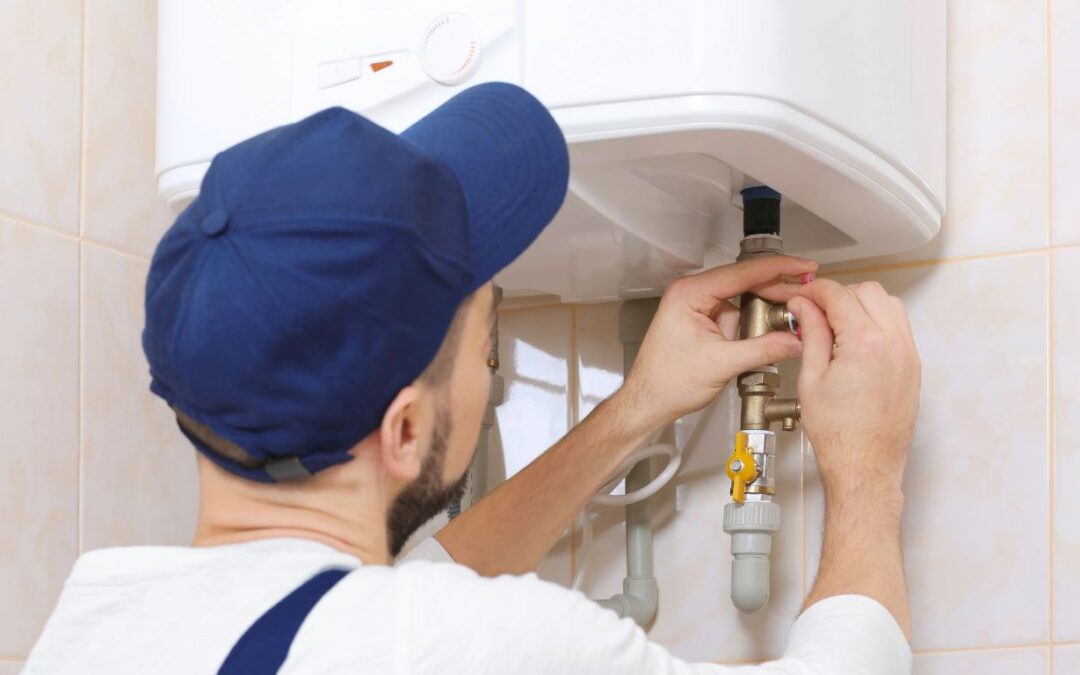Leaky Water Heater? We Have the Answers (and the Solution) to Give You Peace of Mind.
A leaky geyser is more than just an inconvenience – it’s a potential hazard and a drain on your wallet. But don’t panic! This guide will help you tackle the issue head-on.
Understanding the Culprits Behind a Leaky Geyser
- Pressure Overload: Our water systems can experience fluctuations in pressure. Too much pressure can put stress on your geyser’s tank and components, which can lead to leaks.
- Corrosion’s Creeping Damage: Over time, the minerals in our Durban water can corrode your geyser’s interior, especially if you haven’t been diligent with maintenance. This can weaken the tank and cause leaks.
- Loose Connections & Aging Parts: Vibrations, temperature changes, and general wear and tear can loosen connections or wear down gaskets and valves, leading to drips and leaks.
step by step
- Power Down & Cut the Water: Switch off the electricity to your geyser at the distribution board (DB board). Then, turn off the cold water supply valve leading to the geyser.
- Drain the Tank: Connect a hose to the drain valve at the bottom of your geyser and direct it to a suitable drainage area. Open the valve to release the water.
- Pressure Relief Valve Inspection: This valve is your geyser’s safety net. Check for any mineral buildup or damage. If it seems faulty, replace it with a new one that matches your geyser’s specifications.
- The T&P Valve Test: The temperature and pressure (T&P) valve is another safety feature. It can leak if it malfunctions. To test it, carefully lift its lever and let some water escape. If it continues to leak even after the lever is released, replace it.
- Finding & Sealing Leaks: Look for any visible cracks, drips, or wet spots around the tank, pipes, and connections. For small leaks, you might be able to apply a plumbing sealant or epoxy designed for geysers.
Calling in the Pros: When to Seek Help
- Gas Geysers: Leave repairs on gas geysers to us. We will make sure its done safely
- Major Leaks: If you have a large leak or can’t pinpoint the source, it’s best to call a plumber.
- Uncertainty: If you’re uncomfortable with DIY repairs, don’t hesitate to seek professional assistance.
Prevention is Key
- Annual Service: like your car, your geyser needs regular check-ups. Its important Schedule a service with our plumbing professionals at least once a year.
- Monitor Your Pressure: Consider installing a pressure gauge on your geyser’s inlet pipe to keep an eye on the water pressure.
- The Drip Pan: A simple drip pan placed under your geyser can catch minor leaks before they cause damage to your floors or ceilings.
Leaky Faucet Blues? Here’s What You Can Do.
That persistent drip from your faucet might seem minor, but it’s a sign of an underlying issue that needs attention. It wastes water, increases your bills, and can even lead to more significant plumbing problems down the line.
Common Culprits
- Worn-Out Washer: This small rubber disc creates a seal when the faucet is closed. Over time, it can wear out, leading to leaks.
- Damaged O-Ring: This tiny ring seals the connection between the faucet handle and the valve stem. A damaged O-ring can also cause leaks.
- Corroded Valve Seat: This part controls the flow of water through the faucet. If it becomes corroded or pitted, it can cause leaks.
Taking Action:
- DIY Fix: If you’re handy, you might be able to replace the washer or O-ring yourself.
- Call a Plumber: If you’re unsure or the problem seems more complex, don’t hesitate to call a professional plumber. They have the tools and expertise to fix the issue quickly and efficiently.
Remember:
- Ignoring a leaky faucet will only make the problem worse.
- Addressing it promptly saves water and money.
Need a helping hand? Our reliable plumber can make sure your faucet is back in tip-top shape.
Don't let a leaky water heater dampen your day!
Our easy-to-follow guide can help you troubleshoot the issue, but some leaks need a professional touch.
If you’re unsure or need expert assistance, our experienced plumbers are just a call away. We’ll diagnose the problem quickly and efficiently, getting your hot water flowing again in no time.
Contact us today for reliable and affordable plumbing solutions.
Get Your Plumbing Fixed Fast - Book Now!
FAQ: Your Leaky Water Heater Questions, Answered
Why is my water heater leaking from the top?
Leaking from the top of your water heater can point to a few different causes
- Loose inlet/outlet connections: Check the pipes where water enters and exits the tank. Tighten them carefully if needed.
- Temperature/pressure relief valve (T&P valve): This valve releases excess pressure to prevent dangerous situations. If it’s faulty, it might leak.
- Overheating: Excessive temperatures can cause the tank to expand and leak. Have our professionals check your thermostat.
Can I fix a leaking water heater myself?
Simple repairs like tightening connections or replacing a drain valve are DIY-friendly. However, if the leak stems from tank corrosion or a complex valve issue, it’s wise to call our plumber to avoid further damage or safety hazards.


Recent Comments